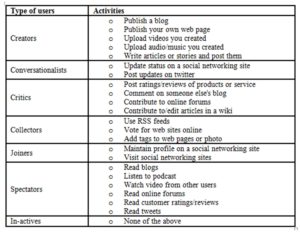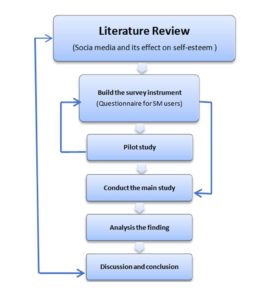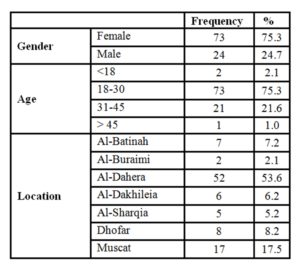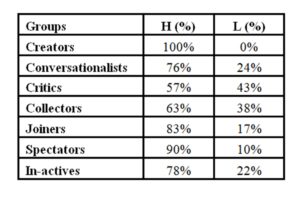Introduction
The interactive version of the web is called Web 2.0. This is an enhanced version of the Internet that enables dynamic user-interaction and user-ability to create and publish web content without special programming. Because of these interactive capabilities of Web 2.0, tools such as Facebook, Google+, YouTube, Twitter, MySpace, LinkedIn, Wikis, podcasts, and blogs have become very popular and are becoming everyday language. Such applications are termed ‘social networks’ or ‘social media’. This phenomenon has become a major part of our lives and many people try to share their day-to-day activities on social networks, and sharing photos and videos is also popular. The rapid rise of social networks has changed the way we interact online, how we connect to people, and, of course, how we market ourselves, our products, and our services. With these tools people have a chance to share and upload information immediately, making data dissemination far more convenient and viral in nature.
Nowadays people are connected with each other more than before through social media. For huge segments of the world’s population, mobile phones, the internet and email, instant messaging, and various forms of digital social media have become deeply integrated into the fabric of daily life [Warf, 2013]. Millions of people are using social media on a regular basis around the world, so that the number of social media users changes literally by the hour [Pérez-Latrel and Tsourvakas, 2013; Westerholm, 2013].
Social media has become a way of expressing and reflecting personal life online. It provides incredible tools to create personal accounts that can be easily viewed by others. This may lead them to be exposed to inappropriate interference and judgment from others. Undoubtedly this may have a serious impact on their feelings and on how they evaluate themselves. This is not the only side of the coin. Social media is a source of inspiration. People are gathering to share their thoughts, interest and achievements. Indeed, the use of social media differs from one person to another. It could range from active use to passive use of it. Therefore, its effect could be positive or negative on their selves. Therefore, using social media can influence the behavior of users positively or negatively
The objective of this research is two-fold: 1) to investigate the different categories of social media user, and 2) to explore how social media affects their self-esteem. To achieve the research objectives a multi-methods approach was employed: 1) an intensive systematic literature review was carried out, and 2) a questionnaire was distributed amongst different social media users to elicit their opinions on how the use of social media has impacted their self-esteem.
The paper is structured in the following way: Section 2 provides a literature review; Section 3 describes the research methodology; Section 4 presents the research findings and discusses them; Section 5 provides a conclusion and suggestions for future work.
Literature Review
Social media
In many cases the definitions of ‘social networks’, ‘social networking’, ‘social media’ and ‘social networking sites’ overlap. In this section we differentiate between these different terms. First, ‘social networks’ are traditionally defined as groups of people who, for example, share interests and/or activities. Social networking is the act of participating or interacting with one another within these social networks, and social networking sites are the websites where the interaction happens [Cohen, 2011; DigitalLikeness, 2008]. Many websites could be classified as being “social networking sites”. Examples of the most popular and well-known are Facebook, Twitter, Blogger, MySpace, Digg, Google+, Stumbleupon, LinkedIn, Second life, YouTube, and Flickr. Social networking sites deliver content through communication, collaboration/authority-building, multimedia, reviews and opinions, micro-blogging, publishing, photo sharing, entertainment and brand monitoring [Bard, 2010]. They provide to users techniques and technologies such as aggregators, audio, video, live-casting, RSS, mobile, crowd sourcing, virtual worlds, gaming, search, conversation apps and Wikis. Boyd [2007] gives another definition of social networking sites as: ‘web-based services that allow individuals (1) to construct a public or semi-public profile within a bounded system, (2) to articulate a list of other users with whom they share a connection, and (3) to view and traverse their list of connections and those made by others within the system’.
Social media are defined as network structures where people are connected together. Any activity they do in the network, for example: follow, forward, like, link, rate, review, reply, comment, and send, is considered a network edge [Smith, 2014].
On the other hand, Kaplan and Haenlein [2010] define ‘social media’ as ‘a group of Internet-based applications that build on the ideological and technological foundations of Web 2.0 and that allow the creation and exchange of user-generated content’. Therefore, social media are just like other media, a means of communicating and exchanging information. Social media offer the opportunity to create or disseminate facts, opinions, arguments etc. in many forms (video, audio, image, text), i.e. social media are the platform and provide the tools for self-expression in various forms. Groups of people with common interests are associated together on social media [SocialMediaToday, 2010]. Clearly the term ‘social networking sites’ and ‘social media’ are used interchangeably.
The Social Technographical Ladder
People are using social media for different purposes and at different levels. Forrester Research Company [Li and Bernoff, 2011] has categorized the users of social media into seven categories and this is called the social technographical ladder (Forrester.com). Below is a table of the social technographical ladder [Li and Bernoff, 2011].
Table 1: The Social Technographical Ladder (Adopted From [Li And Bernoff, 2011])

This research was based on the social technographical ladder which is highlighted in Table 1, to measure the impact of social media usage on one’s self-esteem.
Self Esteem
Self-esteem can be defined as positive self-evaluation or a broader concept of confidence. Positive self-evaluation indicates high self-esteem and negative self-evaluation indicates low self-esteem, this influencing the actions or the attitude of the person. Those who have high self-esteem follow goals actively and aggressively [Suzuki and Shunsuke, 2013].
Furthermore, self-esteem refers to the self or to specific areas of the self, for example their feelings regarding their social standing, their belongingness to a particular ethnic group, their jobs or school performance, their physical appearance, and so on [Wills-Herrera, 2014].
Self-esteem is very important in adolescence because without it or without sufficient amounts of it, the risk of a variety of adverse life outcomes will increase, including mental illness, substance abuse, aggressive and violent behavior, and early pregnancy and parenthood [Boden, 2011].
The Relationship between Social Media Use and Self-Esteem
Some earlier research found that there is a positive relationship between social media use and self-esteem when focusing on close friends and strong ties [Wilcox and Stephen, 2013] and the users had lower self-esteem when there was no interaction with social media [Jonas, 2013]. On the other hand, some researchers could not identify the relationship between the use of social media and self-esteem. For instance, a study conducted with Asian international students found that the results of self-esteem correlated with academic achievement, and were not driven by excessive social media usage [Wu, 2013]. Furthermore, a study shows that certain personality traits have a strong effect on self-presentation on social media than self-esteem, because the big five personality traits (Openness, Conscientiousness, Extroversion, Agreeableness, and Emotional Stability) correspond well with functions of social media. This conclusion was reached by observing Facebook and Twitter users based on the number of posts they did and the time they spent on these accounts [Zhang, 2015].
Another study measured the relationship between the time spent engaging in social networking and individuals’ self-esteem. The results indicated that individuals with lower scores on the Rosenberg Self-Esteem Scale spent more time on Facebook [Turner-August, 2015].
Another study has shed light on the behavior of online users, where it showed a possible relationship between the high usage of social media and higher levels of self-esteem [Crowell, 2015].
Research Gap
The way people interact on social media differs from one person to another; consequently their self-esteem will be different. The previous studies focus on the time spent on social media and its effect on self-esteem. Some of the studies focus on the type of social media used and the behavior of online users but they do not specify which types of activity the users are performing. Therefore, this study is aiming to categorize the users of social media based on the activities that they are performing most on social media. Then, the study will try to find the relationship between the different categories of social media users and their self-esteem through the following hypotheses.
Research Hypotheses
In her article ‘Improve your self-esteem with journaling’, Fryer stated that you can increase your self-esteem by writing about positive things that are happening to you and, by concentrating on the positive, you will end up by valuing yourself more [Fryer, 2016]. According to Forrester’s research [Li and Bernoff, 2011], writing (posting) articles is one of the characteristics of the ‘creators’ type of users. Thus, it was hypothesized:
H1: Creators of social media possess high self-esteem.
Another study found that people who update their status frequently on social media received more social support from their followers [Keith Hampton, 2012]. Furthermore, Ma in his articles ‘Understanding the psychology of twitter’ [Ma, 2009] talked about the Maslow hierarchy of needs. He said that Twitter fails to meet people’s social needs because people who tweet need to fulfill certain needs such as the need to belong and to be cared about. Once these needs are fulfilled, people move to the higher level of the Maslow hierarchy of needs, which is self-esteem. Therefore, posting updates on Twitter will increase their self-esteem [Ma, 2009]. According to Forrester’s research [Li and Bernoff, 2011], people who update their status on social media and post updates on Twitter are the conversationalists. Therefore, it was hypothesized:
H2: Conversationalists possess high self-esteem.
Yet another study found that commenting and discussing on online forums can promote your self-esteem. Consequently, your offline life will be positively affected [Rosenberg, 1979]. According to Forrester’s research, commenting and contributing to online forums are the characteristic of critics. Therefore, it was hypothesized:
H3: Critics possess high self-esteem.
According to Forrester’s research, tagging people to photos is a characteristic of social media users who are collectors. A study searched for the motivations of using tagging among people and found that people used tagging for being able to search and find people in the future, to express themselves and to comment on resources provided by others [Sa and Yuan, 2013]. Referring to collectors, commenting has a positive effect on self-esteem. Thus, it was hypothesized:
H4: Collectors possess high self-esteem.
An article by Westerholm (2013) stated that Facebook had a negative effect on self-esteem. This conclusion comes from a study conducted on a group of people to measure their self-esteem while visiting social media sites. It was found that, no matter what they were doing or how many friends they had, their self-esteem was still low [Westerholm, 2013]. Those who just visit social media sites, with no other contributions, are called joiners. Thus, it was hypothesized:
H5: Joiners possess low self-esteem.
Comparing your life with the life of other people through social media has negative effects on self-esteem [de Vries and Kühne, 2015]. When people read what others post and update in their profile, they feel less satisfied with their lifestyle, and consequently they will have low self-esteem [Williams, 2015]. Another study found that people have low self-esteem when exposed to other people’s accounts who in contrast are posting positive updates and feeds [Tandoc Jr et al., 2015]. For instance, Instagram is based on photos that people share about their vacations or achievements. People who expose themselves to those photos think that other people are happier and more successful in their lives than they are [Winter, 2013]. People who view other’s accounts and read their posts are called Spectators according to Forrester’s research [Li and Bernoff, 2011]. Thus, it was hypothesized:
H6: Spectators possess low self-esteem.
Facebook has a negative effect on passive users who are not engaging in any activities such as sharing, liking and commenting [Highland, 1981]. Moreover, in a study conducted on a control group to measure their self-esteem while they used Facebook without participating in it found that those people had low self-esteem at the end of the study [Tobin et al., 2015]. The people who are not participating or carrying out any activities on social media are called ‘In-actives’. Therefore, it was hypothesized:
H7: In-actives possess low self-esteem.
Research Methodology
The objectives of the study are to investigate the different types/categories of social media users and to investigate the relationship between using social media and its effect on self-esteem. To achieve this, certain steps have been taken. First of all, an intensive literature review has been carried out in order to understand the concept of self-esteem as well as to investigate the characteristics of social media, and the different types/categories of social media user. Based on this investigation, a conceptual research framework was built, as shown in Figure 1 below.
Secondly, a research instrument (questionnaire) was designed and a pilot study was conducted to check the validity of the instrument. The main study was then conducted amongst the social media users in Oman to elicit information about the different types/categories of social media users based on the social technographical ladder, and their self-esteem according to the Rosenberg self-esteem scale [Rosenberg, 1979].

Fig. 1: Research Conceptual Framework Diagram
The Rosenberg Self-Esteem Scale
The Rosenberg self-esteem scale was developed by Morris Rosenberg [Rosenberg, 1979] to measure the self-esteem of people [Rosenberg, 1979]. It consists of a 10 item Likert scale type. It has five points scale ranging from ‘strongly disagree’ to ‘strongly agree’. Five questions were positively worded statements and the other five were negatively worded. The self-esteem was then measured as follows:
- For Items 6, 7, 9, 11, and 12, (‘Strongly agree’ = 5, ‘Agree’ = 4, ‘Neutral’ = 3 , ‘Disagree’ = 2, ‘Strongly disagree’ = 1)
- For Items 8, 10, 13, 14, and 15, (‘Strongly agree’ = 1, ‘Agree’ = 2, ‘Neutral’ = 3, ‘Disagree’ = 4, ‘Strongly disagree’ = 5)
The score for each item was calculated. The total scores ranged from 10 to 50, and it was suggested that those who got a score of 30 and above had high self-esteem and those below that score had low self-esteem. The Rosenberg self-esteem scale was used in this study due to its wide acceptance among researchers, for the brevity, reliability and validity of its results.
The research methodology that was adopted in this research is illustrated in Figure 2 below.

Fig. 2: Research Methodology Diagram
The participants of the research were Omani people from different regions who were using different kinds of social media. The link of the online questionnaire was distributed via one of the social media (e.g.Whatsapp) using the snowballing method.
Data Analysis
The data were collected through the online survey. 97 social media users participated in this survey, 75.3% being female and 24.7% male. Table 2 shows general information about the participants
Table 2: Participant’s Demographic

The survey let the participants choose which category described them most accurately as a social media user. Table 3 shows the different categories of social media users.
Table 3: Social Media Users

The statistical analysis used in this paper is ANOVA analysis. The output of the ANOVA analysis shows that there is no statistically significant difference between group means as determined by one-way ANOVA (F (0.436) = 6, p = .853).
Table 4: ANOVA Table

Table 5 shows whether self-esteem is high or low for each category of social media users. All ‘Creator’ social media users have high self-esteem. So, too, do almost all Spectators and a significant majority of Conversationalist and Inactive users, whereas the self-esteem of Critics was more evenly balanced between high and low. However, overall over half of the users had high self-esteem.
Table 5: Self-Esteem (H Indicates High Self-Esteem; L Indicates Low Self-Esteem)

Discussion and Conclusion
This research aimed to investigate the different types/categories of social media users and to examine the relationship between different social media users and how social media affect their self-esteem.
The research found that most participants were ‘Spectator’ social media users, while the least number of participants were from the ‘Creator’, ‘Critic’ and ‘In-active’ categories (see Table 3).
Upon analyzing the self-esteem of each category of social media users, the results revealed that all types of social media users (Creators, Conversationalists, Critics, Collectors, Joiners, Spectators and Inactives) indicated that they had high self-esteem. Therefore, the research hypotheses H1, H2, H3 and H4 were accepted, while H5, H6 and H7 were rejected.
Some of the limitations of the study reside in the number of participants. Also, the self-esteem study depends on self-reporting by individuals, so that there is a possibility that the participants are not accurate in their evaluation of themselves.
- In brief, there are different categories of social media users. However, it is indicated that the use of social media has a positive effect on self-esteem, whether the users were active or passive in their use of social media.
(adsbygoogle = window.adsbygoogle || []).push({});
Reference
- Bard, M., (2010), 15 Categories of Social Media, Accessed on 29/12/2010, Available at: [http://www.mirnabard.com/2010/02/15-categories-of-social-media/]
- Boden, J. (2011), Self-esteem, In Encyclopedia of Adolescence(Ed, Levesque, R. R.) Springer New York, pp. 2567-2575.
- boyd, D., (2007), Why Youth (Heart) Social Network Sites: The Role of Networked Publics in Teenage Social Life, vol. MacArthur Foundation Series on Digital Learning – Youth, Identity, and Digital Media
- Cohen, H., (2011), 30 Social Media Definitions, Accessed on 15/1/2011, Available at: [http://heidicohen.com/social-media-definition/]
- Crowell, B. R. (2015), The Role of Personality, Self-Esteem, and Life Satisfaction in Regards to Social Networking: An Examination of Facebook Users, a PhD thesis at Alliant International University, Ann Arbor, pp. 112.
- de Vries, D. A. and Kühne, R., (2015), Facebook and self-perception: Individual susceptibility to negative social comparison on Facebook, Personality and Individual Differences, vol. 86, pp. 217-221.
Google Scholar
- DigitalLikeness, (2008), The difference between social media and social networking, Accessed on 29/12/2010, Available at: [http://www.afhill.com/blog/the-difference-between-social-media-and-social-networking/]
- Fryer, E. E., (2016), Improve Your Self-Esteem with Journaling, Accessed on 17 SEP, Available at: [http://www.sparkpeople.com/resource/wellness_articles.asp?id=237]
- Highland, A. C., (1981), Conceiving the Self (Book), Journal of Personality Assessment, vol. 45 (4), pp. 446-447.
- Jonas, B. W., (2013), Social Networking Websites and the Psychological and Psychosocial Impact on the Individuals that Use Them.
- Kaplan, A. M. and Haenlein, M., (2010), Users of the world, unite! The challenges and opportunities of Social Media, Business Horizons, vol. 53 (1), pp. 59-68.
Google Scholar
- Keith Hampton, L. S. G., Cameron Marlow and Lee Rainie, (2012), Why most Facebook users get more than they give, Accessed on 17 SEP, Available at: [http://www.pewinternet.org/2012/02/03/why-most-facebook-users-get-more-than-they-give/]
Google Scholar
- Li, C. and Bernoff, J. (2011), Groundswell: Winning in a World Transformed by Social Technologies, Forrester Research.
Google Scholar
- Ma, M., (2009), Understanding the Psychology of Twitter, Accessed on 17 SEP, Available at: [https://www.psychologytoday.com/blog/the-tao-innovation/200903/understanding-the-psychology-twitter]
- Pérez-Latrel, F. and Tsourvakas, G. (2013), Social Media: Managerial and Economic Opportunities and Challenges, In Handbook of Social Media Management(Eds, Friedrichsen, M. and Mühl-Benninghaus, W.) Springer Berlin Heidelberg, pp. 201-216.
Google Scholar
- Rosenberg, M. (1979), Conceiving the self / Morris Rosenberg, Basic Books, New York.
- Sa, N. and Yuan, X. (2013), What Motivates People Use Social Tagging, In Online Communities and Social Computing, Vol. 8029 (Eds, Ozok, A. A. and Zaphiris, P.) Springer Berlin Heidelberg, pp. 86-93.
Google Scholar
- Smith, M. A. (2014), Mapping Online Social Media Networks, In Encyclopedia of Social Network Analysis and Mining(Eds, Alhajj, R. and Rokne, J.) Springer New York, pp. 848-857.
- SocialMediaToday, (2010), 5 Differences between Social Media and social networking, Accessed on 15/11/2011, Available at: [http://www.socialmediatoday.com/SMC/194754]
- Suzuki, S.-i. and Shunsuke, K. (2013), Self-Esteem, In Encyclopedia of Behavioral Medicine(Eds, Gellman, M. and Turner, J. R.) Springer New York, pp. 1739-1740.
- Tandoc Jr, E. C., Ferrucci, P. and Duffy, M., (2015), Facebook use, envy, and depression among college students: Is facebooking depressing?, Computers in Human Behavior, vol. 43, pp. 139-146.
- Tobin, S. J., Vanman, E. J., Verreynne, M. and Saeri, A. K., (2015), Threats to belonging on Facebook: Lurking and ostracism, Social Influence, vol. 10 (1), pp. 31-42.
Google Scholar
- Turner-August, S. M. (2015), The relationship between social networking and self-esteem, a PhD thesis at Alliant International University, Ann Arbor, pp. 60.
- Warf, B. (2013), Social Media, In Global Geographies of the Internet, Vol. 1 Springer Netherlands, pp. 139-166.
- Westerholm, R., (2013), Facebook Use Bad For Self-Esteem No Matter Why You Log On, Accessed on 28 Oct, Available at: [http://www.universityherald.com/articles/4230/20130816/facebook-use-bad-self-esteem-matter-why-log.htm]
- Wilcox, K. and Stephen, A. T., (2013), Are Close Friends the Enemy? Online Social Networks, Self-Esteem, and Self-Control, Journal of Consumer Research, vol. 40 (1), pp. 90-103.
Google Scholar
- Williams, R., (2015), How Facebook Can Amplify Low Self-Esteem/Narcissism/Anxiety, Accessed on sep 18, Available at: [https://www.psychologytoday.com/blog/wired-success/201405/how-facebook-can-amplify-low-self-esteemnarcissismanxiety]
Google Scholar
- Wills-Herrera, E. (2014), Self-Esteem, In Encyclopedia of Quality of Life and Well-Being Research(Ed, Michalos, A.) Springer Netherlands, pp. 5772-5774.
- Winter, J., (2013), Selfie-Loathing, Instagram is even more depressing than Facebook, Accessed on SEP 17, Available at: [http://www.slate.com/articles/technology/technology/2013/07/instagram_and_self_esteem_why_the_photo_sharing_network_is_even_more_depressing.html]
- Wu, Y. (2013), The use of social networking services, subjective well-being and self-esteem of Asian international students in the U.S, a PhD thesis at State University of New York at Buffalo, Ann Arbor, pp. 49.
Google Scholar
- Zhang, H., (2015), Gender, Personality, and Self Esteem as Predictors of Social Media Presentation.
Google Scholar









